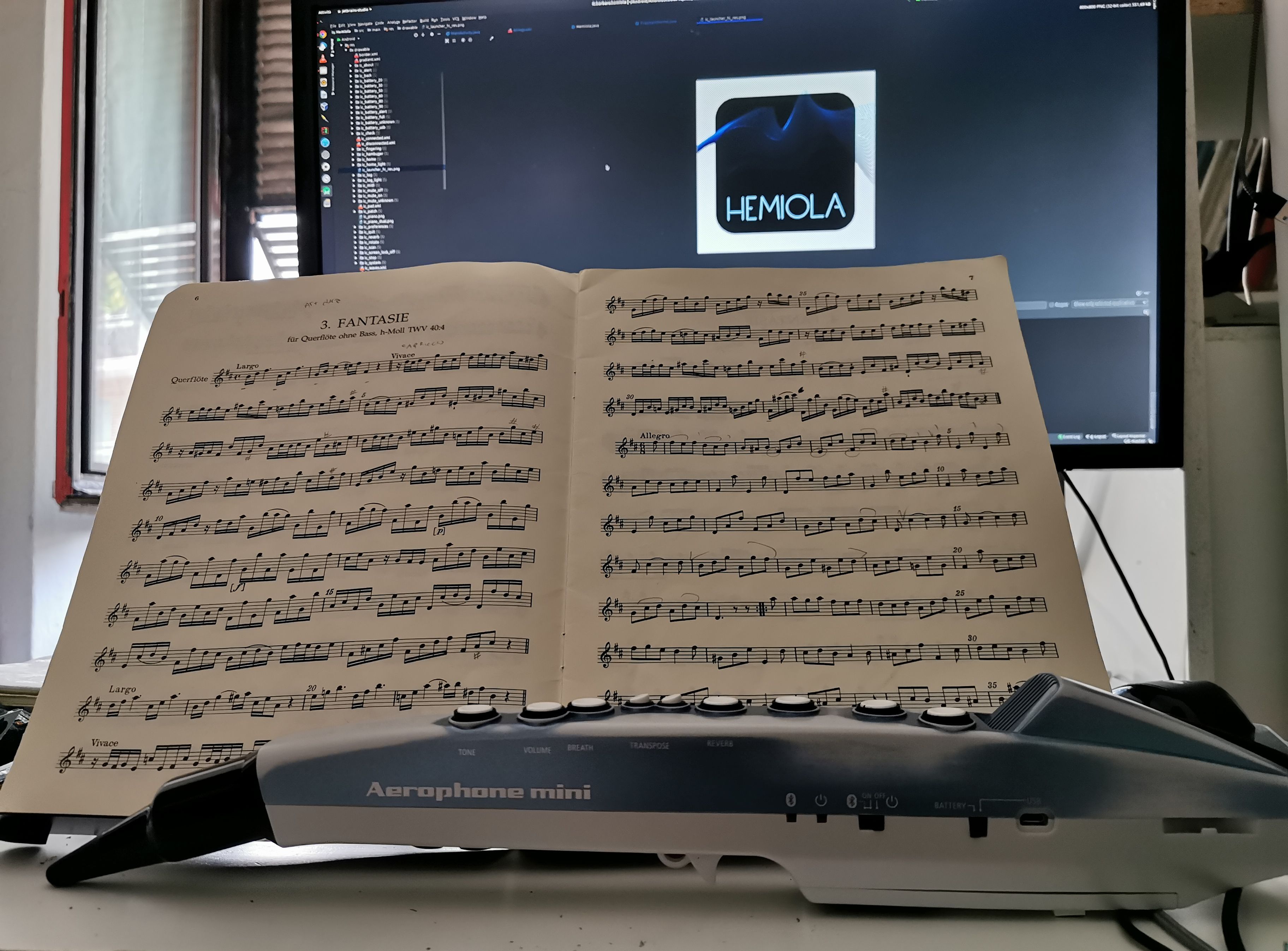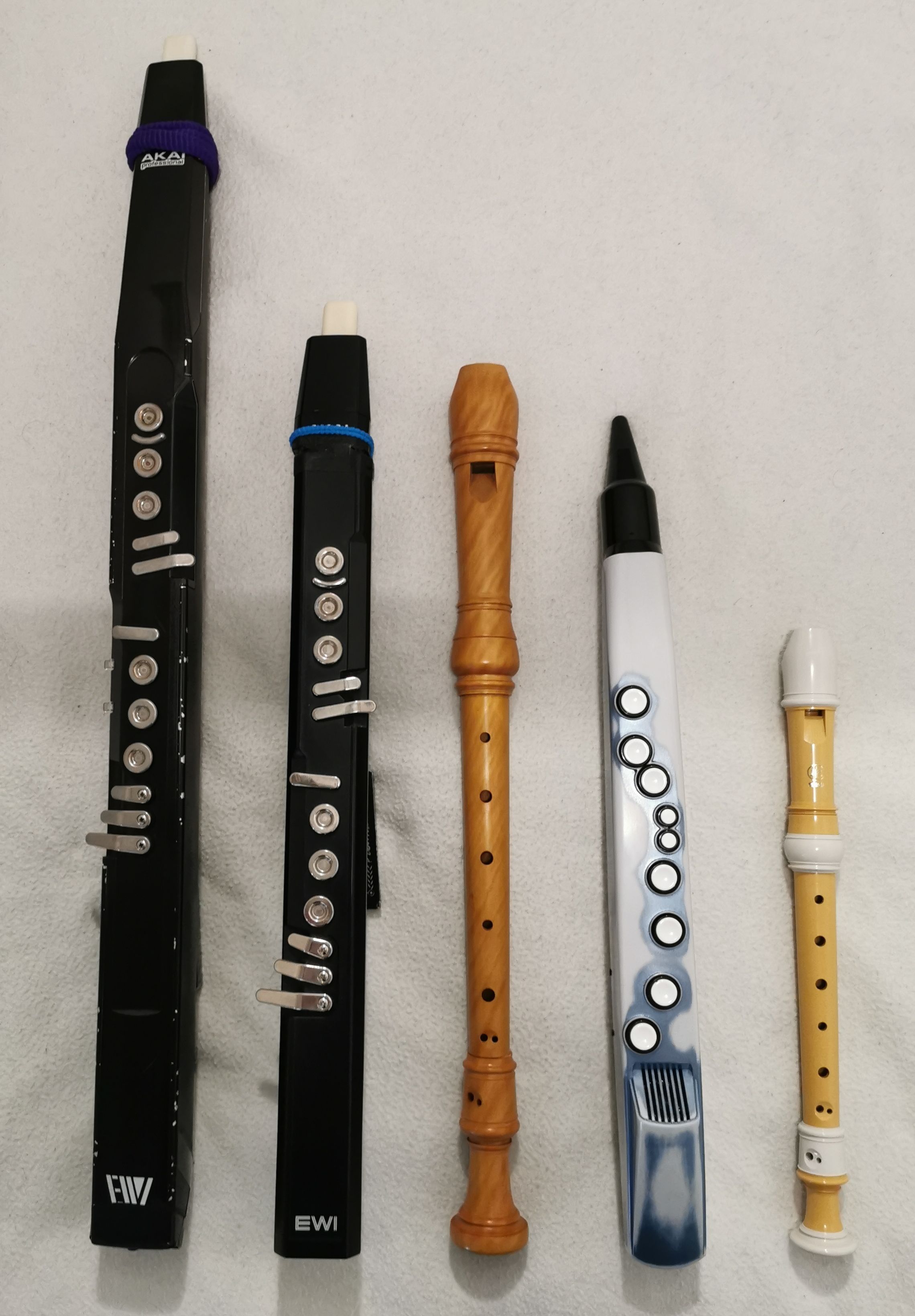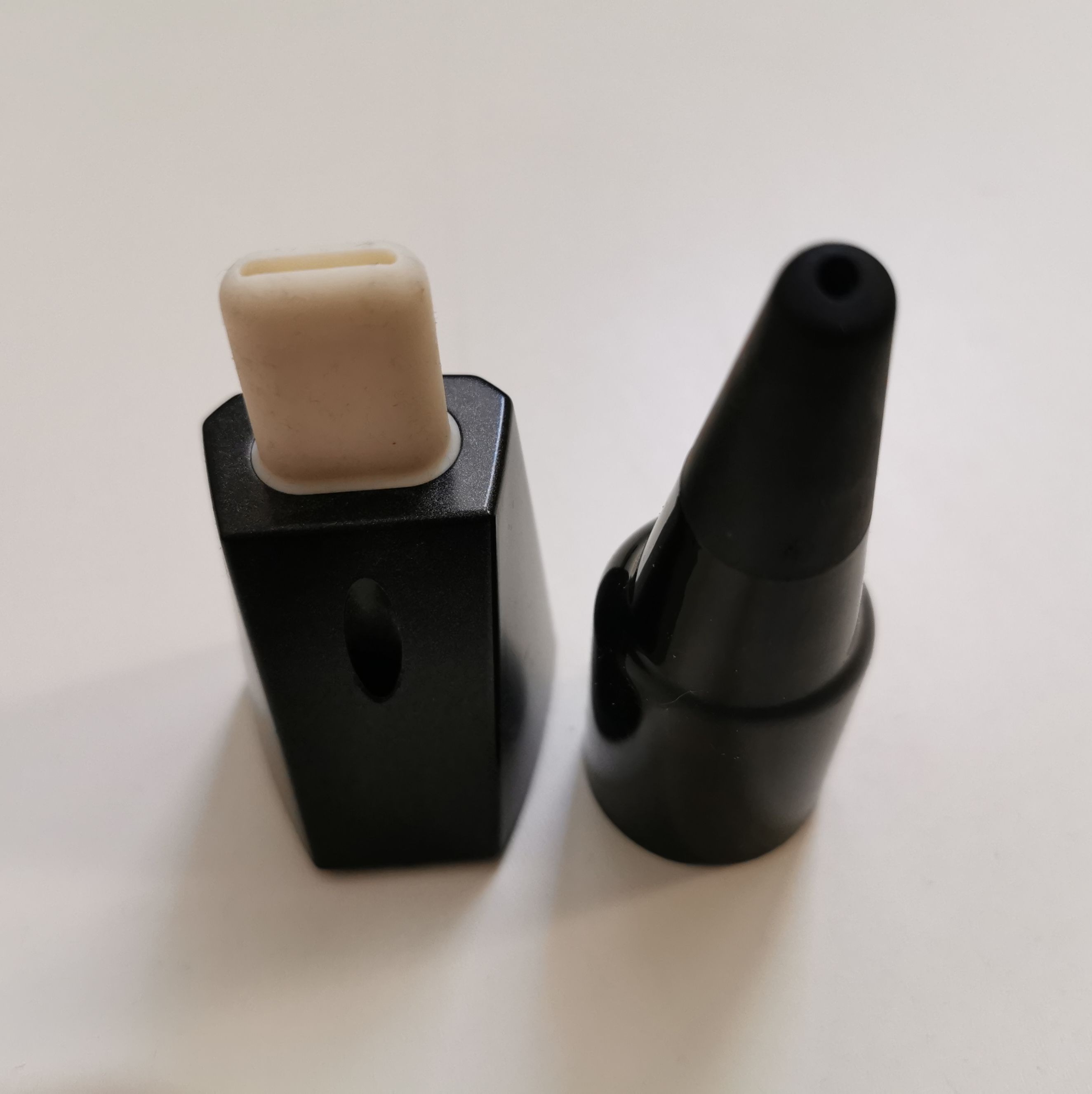Has the Aerophone Mini anything to do with Recorders?
And why should I buy one?
I have been sort of challenged by a Facebook Recorder Group moderator to justify why I shared my post about Aerophone Mini alternate fingerings for the recorder player in said group. The question was “Has the Aerophone mini anything to do with recorders?”
My first reaction was one of confusion, because I thought:
It’s in the title of the article!
You are just one google search away from the answer.
No, really, it’s in the title!
Then I thought that maybe Roland’s marketing could do their job a little more effectively and that this matter (the relation between the Aerophone Mini and recorders) should have already been cleared up by them. *
By the way, the question “Has the Aerophone mini anything to do with recorders?” is legit and eventually justified by the situation, that is:
lack of proper communication by Roland (in my opinion);
novelty of the product (the Aerophone Mini was released last September);
natural tendency of recorder players to conservatism.
So, challenge accepted, I’m going to try and answer the question.
First, a couple of premises.
 1st Premise. To those who don’t know yet, I say: yes, there is such a thing as a Professional Recorder player and there is a rich and numerous community of recorder players of all levels all over the world. There is a specific repertoire for the recorder that comprises dedicated compositions written up to the 18th century (composers such as Vivaldi, Haendel, Telemann and, to some extent, Bach himself wrote explicitly for the recorder) and, even more, made by a lot of pieces written in the 20th and 21th centuries. There are tens of different recorder models produced both by proper industrial factories and by small artisans. Finally, there are professional, university-level Recorder courses anywhere in the world, where you can get a degree after years of dedicated studies.
1st Premise. To those who don’t know yet, I say: yes, there is such a thing as a Professional Recorder player and there is a rich and numerous community of recorder players of all levels all over the world. There is a specific repertoire for the recorder that comprises dedicated compositions written up to the 18th century (composers such as Vivaldi, Haendel, Telemann and, to some extent, Bach himself wrote explicitly for the recorder) and, even more, made by a lot of pieces written in the 20th and 21th centuries. There are tens of different recorder models produced both by proper industrial factories and by small artisans. Finally, there are professional, university-level Recorder courses anywhere in the world, where you can get a degree after years of dedicated studies.
2nd Premise. I used to be a Professional Recorder player, meaning that for quite a few years my main (if only) instrument was the recorder and that my only source of income were music-related activities such as concerts and teaching. I have a Recorder degree (a diploma) in early music, and two Jazz music degrees obtained with the recorder. Lastly, I used to maintain a Recorder blog (in Italian, you can find it here). As for wind controllers, I bought my first Akai EWI 4000 exactly ten years ago and, since then, I have played it in many concerts and even recorded a couple of albums with it. I owned a Yamaha WX5 (with its vl70m) and currently own an EWI USB and an Aerophone Mini. I am a tech-nerd and my other job is as software developer. All of that to say: I believe I’m in the right spot to answer that question.
 Why a Wind Controller?
Why a Wind Controller?
Should an acoustic wind instrument player get a digital wind instrument and why? Here’s a few possible answers:
To explore new sounds;
To expand her/his repertoire;
To take advantage of a much bigger extension (with some models, we have up to 7 octaves);
To practice silently at night;
To avoid amplification problems on stage (this is particularly inherent to recorders, which are not easy to amplify);
Just because! (Aren’t you a curious person?)
Unfortunately for recorder players, most of the wind controllers in the market are aimed at sax players.
We must consider four aspects, when choosing the right digital wind controller:
Mouthpiece/embouchure.
Fingerings.
Left thumb technique.
Size and weight.
Mouthpieces
 All Akai EWIs have a recorder-like mouthpiece that allows for a very smooth and easy transition, while all old Yamaha WXs and all Roland Aerophones offer a sax-like mouthpiece. With the exception of the Aerophone Mini (and its elder sibling Go) that optionally offers a “rounded” mouthpiece (see here for my considerations on this): this last option is not as optimal as the Akai’s one, but it requires recorder players to adjust just slightly their embouchure.
All Akai EWIs have a recorder-like mouthpiece that allows for a very smooth and easy transition, while all old Yamaha WXs and all Roland Aerophones offer a sax-like mouthpiece. With the exception of the Aerophone Mini (and its elder sibling Go) that optionally offers a “rounded” mouthpiece (see here for my considerations on this): this last option is not as optimal as the Akai’s one, but it requires recorder players to adjust just slightly their embouchure.
Fingerings
All serious recorder players have “Baroque” fingered instruments, that is: a lot of “forked” positions on the instrument. Akai EWIs have a great advantage to the recorder player: they are “key-less”, no mechanics under the fingers, just contact (you find keys on the recorder, but mainly just on tenors, basses and some modern altos, so we are not that used to pressing buttons with fingers). But the fingering schemes on Akai EWIs are not editable and a lot of forked positions are missing. For example, there is no way to play a G#/Ab (C fingering) other than resorting to the left pinky key (something we recorderists are even less used to).
 Aerophones, on the contrary, allow for up to ten custom fingerings (see my article here) that are just enough to fill the gaps and add all the positions we are used to. On the other hand, Aerophones have buttons, so the fine finger mechanics are slightly different and we have to get used to it. In any case, coming from the recorder, the Aerophone mini (and the GO) offers the smoothest transition possible regarding finger positions.
Aerophones, on the contrary, allow for up to ten custom fingerings (see my article here) that are just enough to fill the gaps and add all the positions we are used to. On the other hand, Aerophones have buttons, so the fine finger mechanics are slightly different and we have to get used to it. In any case, coming from the recorder, the Aerophone mini (and the GO) offers the smoothest transition possible regarding finger positions.
Left Thumb technique
Acquiring the right technique with the left thumb is one of the main challenges on the recorder. Believe it or not, not only general speed is affected by a poor left thumb technique, but also intonation. So recorder players are justifiably very sensitive to this aspect.
Akai EWIs are the worst, in this case: they offer a multiple rolling mechanism for octave changing that, once mastered, can be very effective but it’s as far as possible from any other acoustic instrument, recorder included.
The Aerophone mini offers a good compromise, in my opinion. It took me sometime to figure out the right left thumb position and technique, but eventually I discovered that a combination of the two main recorder left thumb techniques, “pinching” and “rolling”, is the way to go. I will surely write an article on this, but for now it should suffice to say that, once found the right technique, it took me just a few days of practice to obtain smooth octave passages, using something I already knew (pinching and rolling) in a slightly different way.
EDIT 2020/08/02: Article on left thumb technique and Octave Exercises published!
Size Matters
The Akai EWI 4000s is a wonderful instrument, but it’s really too big and heavy from a recorder player standpoint. Even the EWI USB, which is definitely smaller than the 4000s and much less heavy, is somehow too long: in fact, I ended up cutting a piece out of it!
There is also an important aspect in the distance between the mouthpiece and the hands: it is true that, as recorder players, we get used at a long distance in height between mouth and fingers (think of bass instruments) but the reference for most of us are the alto or soprano recorders. The Aerophone mini is just perfect.
All Roland Aerophones, except the Mini, are also too large for us: the space between thumbs and indexes is filled up by the instrument, something we are not used to. Also the depth of the instrument, that is the distance between thumbs and the other fingers of the hand, plays a role. Regarding this, all Aerophones and EWIs are more or less the same: something between a tenor and a bass recorder.
One possible issue with the Mini is its weight: if you install the four required AA batteries, it becomes barely playable without a neck strap, but it is still possible to avoid the strap and use the thumb rest only.
Range/Extension
The Aerophone Mini has a built-in range of about three octaves that we can transpose up or down of another three octaves (with the Roland app or my soon-to-be-released Hemiola app). By programming some custom fingerings we can obtain another fifth in range, for a total of three octaves and a fifth, a whole octave more than most recorders. The advantages are obvious, but they can be extraordinary when you try and play repertoires from other instruments, notably the baroque transverse flute: usually in this case recorder players transpose up by a minor third or use a special recorder called Flauto di voce (voice flute). With the Mini you can play your favorite Telemann’s Fantasia or Bach’s sonata (father and son) in the original key: not only they sound much better, but you will have your continuist love you for not asking her/him to transpose.
Conclusions
The Roland Aerophone Mini is at the moment the most affordable mass-produced wind controller that requires the least effort for a recorder player to get proficient with. There are a few other options on the market, some explicitly aimed at recorder players, but they generally cost a lot more and are stuffed with additional functions, controls and sensors that make the learning curve steeper (in my opinion).
Here is a recap table with pros and cons of the Aerophone Mini for recorder players.
| PROS | CONS |
| Perfect size. | Slightly too heavy with batteries. |
| Smooth transition for fingering positions. | Buttons/Mechanical Keys (whose responsiveness could be improved). |
| Great range extension. | - |
| Can be easily transposed to F (for alto recorder fingerings) | - |
| Left thumb “Pinching” and/or “Rolling” techniques can be reused. | - |
| Offers an optional “round” mouthpiece for easy transition. | No recorder-like mouthpiece (yet). |
| Optimal sensitivity for tongue articulation and breath vibrato. | No built-in means to control micro-intonation (i.e. no pitch bend controls, this is the biggest of cons, in my opinion). |
| Great usability in general: small footprint, long battery life, ready to be played when switched on, easy onboard controls for sounds, volume, transposition, breath response and reverb. | Only six sounds (playable, but could be improved a lot in quality and number). The built-in speaker is OK for studying, but way too small for any other usage. |
| Great expandability: full MIDI implementation both via USB and Bluetooth, headphones/amplifier output. | - |
That’s all for the moment, guys, thanks for taking the time to read through it all.
Let me know what you think!
---
* Is it just my impression that Akai, Yamaha and now Roland don’t seem to understand the true potential of their own products, when it comes to Wind Controllers, or at least their marketing divisions don’t (or didn’t, in Yamaha’s case)? I might be wrong in more than a way, but it looks like they always try to dumb down the image (and the potential) of their own wind controllers, certainly in an attempt at reaching a wider audience. I am not sure this strategy is working. For example, the Aerophone Mini Plus app on the Google Play Store has about 1.000 downloads at the date: a ridiculously low figure for a free app related to a 300€ instrument.